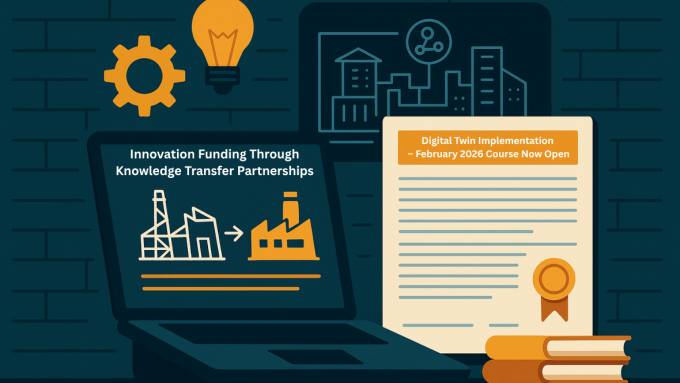Transforming an entire industry is, at its core, a call to action for all industry stakeholders to collaborate and change. The National Digital Twin programme (NDTp) aims to do just that, enabling a national, sector-spanning ecosystem of connected digital twins to support people, the economy, and the natural environment for generations to come.
But to achieve these ambitious impacts, a great deal of change needs to occur. So, to provide clear rationale for why potential activities or interventions should be undertaken and why they are expected to work, Mott MacDonald has worked with CDBB to develop a Theory of Change (ToC) and a Benefits Realisation Framework (BRF) to represent the logical flow from change instigators (i.e., levers) to overall benefits and impacts. The ToC and BRF are expected to provide future leaders and policymakers with a clear understanding of the drivers of change and the actors involved to create an ecosystem of connected digital twins.
Components of the Theory of Change
Within the ToC, we outline several key components – actors, levers, outputs, outcomes, impacts, and interconnected enablers. As a national programme uniting the built environment through a complex system of systems, it is essential that multiple actors collaborate, including asset owners and operators, businesses, government, academia, regulators, financial entities, and civil society. These actors need to share a common determination to move the needle towards better information management by utilising a combination of interconnected levers to kickstart the change: financial incentives, mandates and legislation as well as innovation.
We see that pulling these three levers is likely to trigger tangible change pathways (i.e., the routes in which change takes place), manifested through the ToC outputs and intermediate outcomes, leading to the creation of institutional and behavioural changes, including organisations taking steps to improve their information management maturity and exploring cross-sector, connected digital twins. Ultimately, we consider these change pathways to lead to the long-term intended impact of the NDTp, achieving benefits for society, the economy, businesses, and the environment.
Underpinning and supporting the levers and change pathways are the enablers. We see these as positive market conditions or initiatives and are key in implementing and accelerating the change. They span having a unifying NDTp strategy, vision and roadmap, empowering leadership and governance, leveraging communication and communities, building industry capacity, and adopting a socio-technical approach to change.
The five levels of the Theory of Change
We intend for the ToC to outline how change can occur over five distinct levels: individual, organisational, sectoral, national, and international. The individual level involves training and upskilling of individuals from school students to experienced professionals, so that individuals can be active in organisations to drive and own the change. Our previous work with CDBB focused on the Skills and Competency Framework to raise awareness of the skills and roles needed to deliver a National Digital Twin in alignment with the Information Management Framework (IMF).
At the core of establishing the National Digital Twin is the organisational level, within which it is essential for change to occur so that organisations understand the value of information management and begin to enhance business processes. Broadening out from these two levels sits the sectoral level, where the development of better policies, regulations and governance can further support the change across all levels. Similarly, change at the national level will guide strategic engagement and should encourage further public support.
Ultimately, change at these four levels should achieve change at an international level, where the full potential of connected digital twins can be realised. Through the encouragement of international knowledge sharing and by creating interconnected ecosystems, challenges that exist on a global scale such as climate change can be tackled together.
Benefits Realisation Framework
Monitoring and evaluation have been fundamental to the assessment of public sector policy and programme interventions for many years. The potential benefits of the NDTp are significant and far reaching, and we have also developed guidance on how to establish a benefits realisation framework, based on UK best practice including HM Treasury’s Magenta Book, to drive the effective monitoring and evaluation of NDTp benefits across society, the economy, businesses, and the environment. We intend for this to provide high-level guidance to measure and report programme benefits (i.e., results) and track programme progress to the NDTp objectives outlined in the Theory of Change.
The Gemini Papers
Our work in developing the Theory of Change for the National Digital Twin programme has informed one of the recently published Gemini Papers. The Gemini Papers comprise three papers addressing what connected digital twins are, why they are needed, and how to enable an ecosystem of connected digital twins, within which the Theory of Change sits.
Together, we can facilitate the change required to build resilience, break down sectoral silos and create better outcomes for all.



Leave a comment